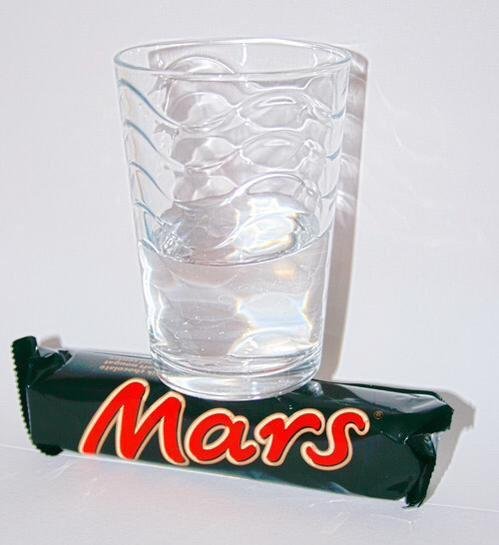Water on Mars

Scientists claim that significant water resources are hidden under the surface of Mars, at a very low depth, which can be a discovery that can be extremely useful for future Mars research missions.
The results were published in the scientific journal Science by Colin Dundas, a research group from the American Geological Institute in Arizona. The discovery was carried out by the Mars Reconnaissance Orbiter HiRISE (High Definition Imaging Scientific Experiment). (1)
Eight mid-latitudes were found, where steep slopes (shores or rocks), which are crowded, contain ice in a huge cross-section. In some regions, the ice is surprisingly 100 meters thick and starts just 1 or 2 meters below the surface.
In addition, the ice seems to be layered, not too different from the sedimentary layers of the Earth. This means that the plates can tell us a lot about different geological periods in Mars history.
"This opens up a much more detailed window on the vertical structure of the Martian ice cover and shows that only a thin debris is found above it, and in some cases fine layers," Dundas said.
"The most important thing is that there is layered ice cover on Mars, which is buried quite shallow."
We already know that Marson is a water ice, but this research highlights how close a part of ice is in the mid-latitude regions of Mars to the surface. This means that it is readily available for future exploratory missions, such as the European ExoMars rover at the beginning of 2021, which also takes a drill that is capable of drilling under the surface 2 meters deep.
The plates discovered by Dundas and his team are steeped in angle, suggesting that ice is strong. The lack of craters suggests that they are extremely young, perhaps less than one million years old.
There are huge boulders that are falling from some parts of the ice, suggesting erosion works, and ice is pulled back a few millimeters each summer. This is also the result of sublimation when the ice is directly converted to gas in the low pressure marsh environment.
During the human mission of the future, you can use the water on Mars to consume or even fuel it. HiRISE has photographed only 3 percent of the surface so far, so many such discoveries are likely to occur.
"This ice ... is likely to preserve the clues of climate change, affect the planet's resilience, and be a potential resource for future discoveries," the team wrote.